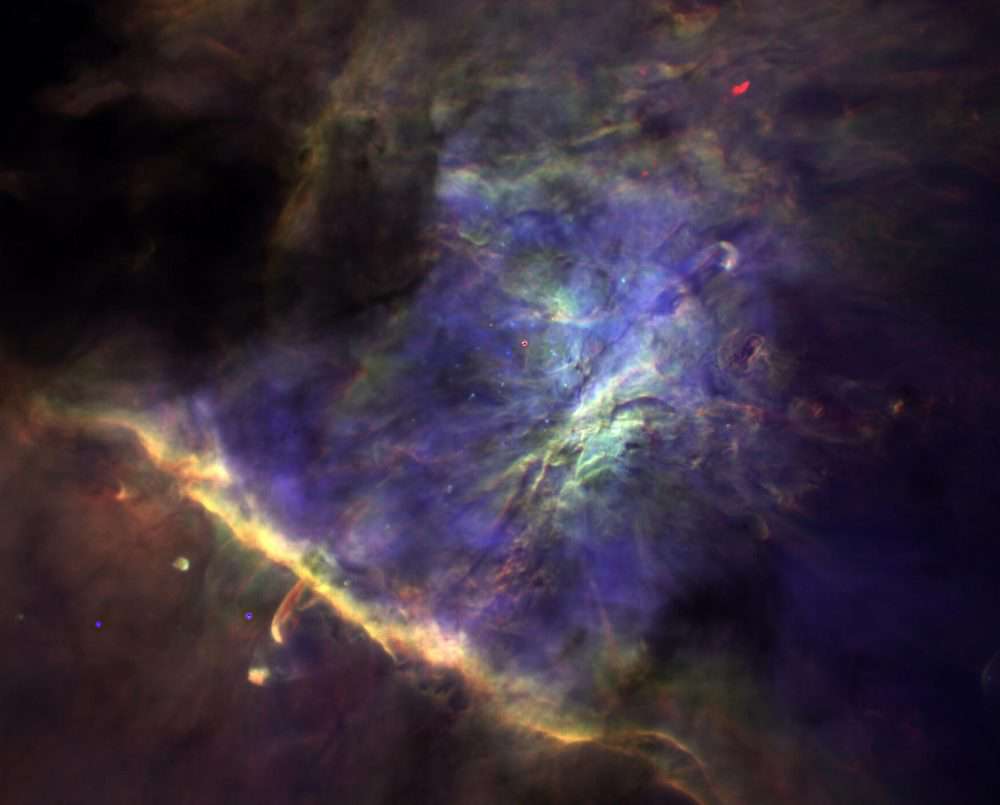The Cosmos with the Orion Bar M42
The Orion Bar stands out as a bright ridge to the Southeast of the Trapezium cluster, but its prominence is actually a consequence of limb brightening, i.e. our peculiar viewing angle. The Orion Nebula is bounded on multiple sides by an ionization front, but we happen to see the bar edge-on, causing it to appear brighter. Molecular hydrogen (H2) makes up 99% of the cold dense gas in galaxies. So mapping where stars are born basically means measuring H2, which lacks a strong characteristic signature at low temperatures. Astronomers from SRON Netherlands Institute for Space Research and the University of Groningen have now mapped an emission signal from the trace molecule hydrogen fluoride (HF), in a place where the standard trace molecule carbon monoxide is absent. They are the first to produce a map of HF for a region in space, creating a new tool to indirectly map H2. Publication in Astronomy & Astrophysics on November 6th.
he Orion Nebula (also known as Messier 42, M42, or NGC 1976) is a diffuse nebula situated in the Milky Way, being south of Orion’s Belt in the constellation of Orion. It is one of the brightest nebulae, and is visible to the naked eye in the night sky. M42 is located at a distance of 1,344 ± 20 light years and is the closest region of massive star formation to Earth. The M42 nebula is estimated to be 24 light years across. It has a mass of about 2,000 times that of the Sun. Older texts frequently refer to the Orion Nebula as the Great Nebula in Orion or the Great Orion Nebula.
